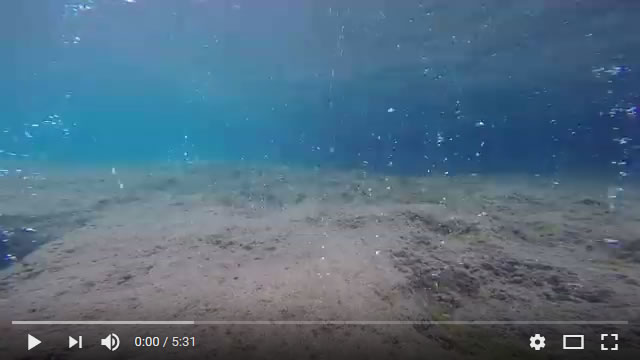Future4Oceans
Global Modality, H2020-MSCA-IF-2015, N 702628
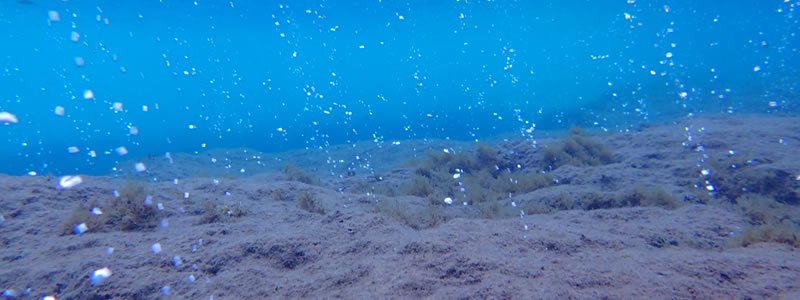
Future4Oceans is a research project Marie Sklodowska-Curie Action under the European Research Program H2020. Future4Oceans seeks to improve our understanding and ability to predict the impacts of ocean acidification (OA) by integrating novel approaches such as functional-community level studies in natural CO2 vent systems and genomic studies of the adaptive potential of a coral species to adapt to OA. Moreover, I will use virtual reality to increase public understanding of OA. This MSCA involves the Stazione Zoologica A. Dohrn as a Beneficiary, and the Hopkins Marine Station of Stanford University and the Laboratoire d’Océanographie de Villefranche- Univerisity Pierre and Marie Curie as Partner organitzations. It will last 3 years, from 2016 to 2019.

High-CO2 Seas
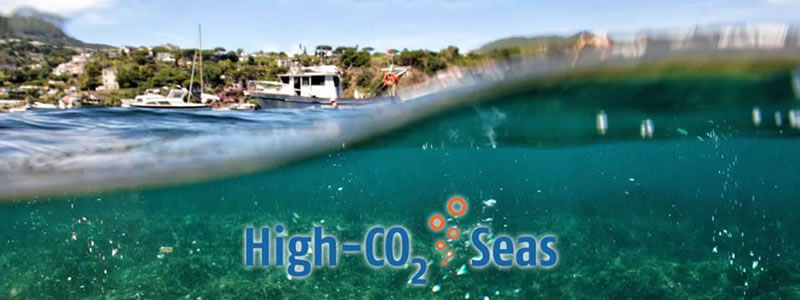
The aim of the High-CO2 Seas project is to assess the effects of OA on marine biodiversity across different habitats, typical of the Mediterranean Sea, affected by volcanic CO2 vents occurring along the coast of Ischia Island (Tyrrhenian Sea Italy) and to study the mechanisms of acclimation/adaptation to OA on the endemic Mediterranean coral Astroides calycularis. High-CO2 Seas is funded by the Total Foundation, which includes 7 partner institutions from the USA and Europe and will last two and half years. For more information, please visit the webpage highco2seas.com.

Window to the Future
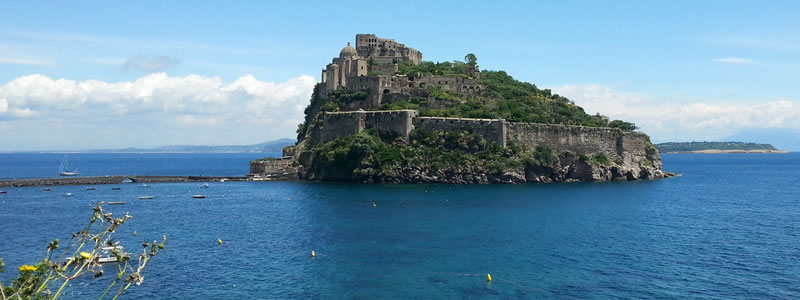
Here, we proposed to study newly discovered vents along the coast of Ischia across depths of 3-48 m. These sites span a variety of different habitats such as Posidonia oceanica seagrass meadows, gravel and sandy bottoms, semi-dark cave habitats and coralligenous outcrops, the latter dominated by calcifying organisms that are particularly vulnerable to OA. These habitats are hotspots of Mediterranean marine biodiversity, but it is unknown how they will be affected by OA. We carried out SCUBA diving surveys, pH sensor deployments and seawater analyses. This project allowed international collaboration with Dr. Maria Cristina Gambi and Dr. Nuria Teixido (SZN, Italy), Dr. Enric Ballesteros (CEAB-CSIC, Spain), Dr. Kristy Kroeker (UCSC, US) and Prof. Fiorenza Micheli (HMS-SU, US). Window to the Future was funded by the National Geographic Society- Committee for Research and Exploration (# 9771-15) and lasted one year 2016.

Please follow this link to watch the video.
vulnerClima
Understanding and assessing the vulnerability of marine benthic biodiversity to climate change
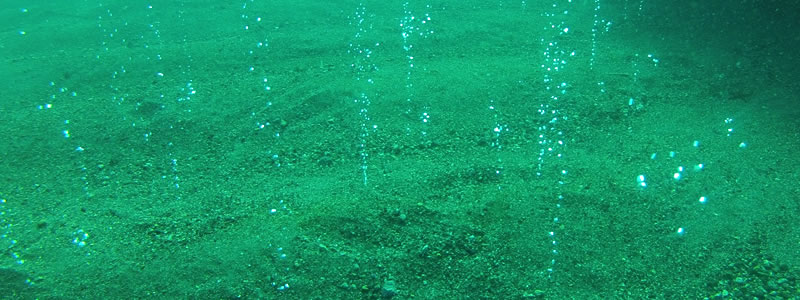
The main aim of the vulnerCLIMA project is to better understand and predict the vulnerability to climate-related stressors (e.g. ocean warming and acidification) of Mediterranean marine coastal biodiversity. Like most marine ecosystems worldwide, the Mediterranean Sea is highly impacted by several human-mediated threats. The Mediterranean Sea is a hotspot of marine biodiversity and is also considered to represent a climate change hotspot and will undergo one of the largest changes in climate worldwide. The project is based along the coast off Ischia Island, near Naples (Italy), where there are near shore volcanic CO2 vents on which causes local acidification of seawater by as much as 1.5 pH units below the average ocean pH of 8.1-8.2. This study area is a primary example of a naturally acidified marine ecosystem. vulnerCLIMA was funded by the European Commission (FP7- People- Co-funding of Regional, National, and International Programmes, Grant Agreement n 600407) and the Ritmare Flagship Project.
medDiversa
Global change on highly diverse Mediterranean coralligenous communities: Consequences for biodiversity conservation

For the last four years I have served as lead scientist for the medDiversa project. In this project, we aim to investigate the current extent of biodiversity of the highly diverse coralligenous outcrops, to furnish data on several localities in order to detect future changes, and to create a scientific platform in developing future scenarios of biodiversity responses to global change across large spatial and mid- to long-term temporal scales. In the Mediterranean Sea, coralligenous outcrops are of special concern, as they (i) represent one of the most important hotspots for biological diversity (harboring approximately 10% of Mediterranean species), (ii) exhibit great structural complexity, (iii) contribute greatly to carbon regulation and habitat for fishes and (iv) are among the habitats facing major threats. This project has been funded by Total Foundation.
Seascape
Segmentation and Cover Classification Analyses of Seabed Images
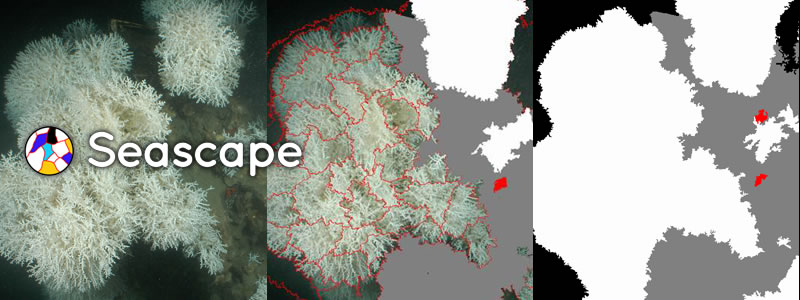
I lead a multidisciplinary group of ecologist, and computer engineers to bring new image technology to marine benthic ecology. We developed software named Seascape, see Teixidó et al. 2011 MEPS (View), which is a free and an open-source software to get semi-automatically segmented images (homogenous regions) from underwater photographs of benthic communities, where each individual patch (species/categories) is routinely associated to its area cover and perimeter. The software, manuals, tutorial videos, and all the information are published on the web with free access. This project was funded by the Medchange project (Agence National pour la Recherche, France), Marie Curie Actions (FP6-2002-Mobility5-No. 010726 & FP7-People-2007-2-2-ERG-Proposal No. 207632), Spanish Ministry of Science and Innovation (CTM2009-06027-E/MAR), and Total Foundation.
medRecover
Marine Conservation Research Group
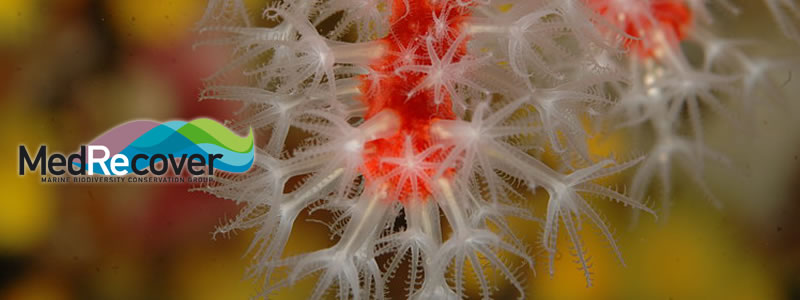
I am member of the medRecover Research Group recognized as a consolidate research group by the Government of Catalonia’s Agency for the Administration of University and Research Grants (Agència de Gestió d’Ajuts Universitaris i de Recerca -AGAUR). The group studies the direct and potential combined effects of global change on the conservation of marine biodiversity in rocky coastal ecosystems, mainly in the Mediterranean Sea.
ECOWED
Ecological reactions to climate change in the Weddell Sea, Antarctica
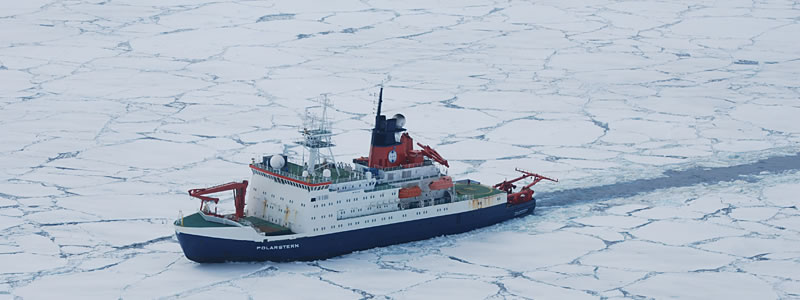
I am part of a project that attempts to characterize and understand benthic community responses in terms of biodiversity patterns to different environmental regimes along the continental shelf of the Antarctic Peninsula. These regions differ mainly by seasonal sea ice extent and permanent water masses circulation. We expect that this study will contribute to the general understanding of the functioning of Antarctic ecosystems, which are undergoing an accelerating pace of climate change. Funding is provided by the Spanish Ministry of Economy and Competitiveness (TM2012-39350-C02-01) and encompasses the main objectives for the AnT-ERA Program (Antartctic Thresholds-Ecosystem Resilience and Adaptation). Logistic support comes from the AWI (Alfred Wegener Institute) and the Cruise Participants of Polarstern ANT XXIX/3.
T-MedNet
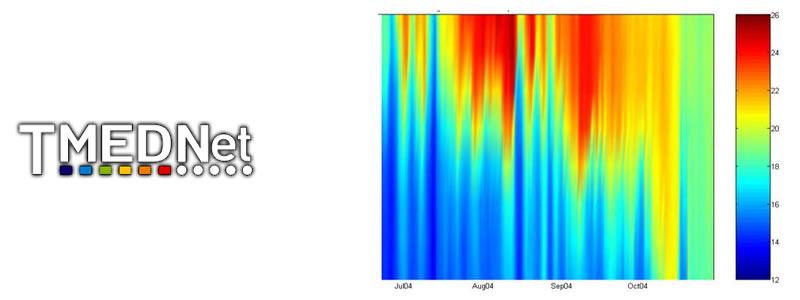
I participate to the T-MedNet network that seeks to acquire long-term high resolution temperature series in Mediterranean coastal waters from 0 to 40 m depth to fill the overall gap of data sets on thermal regimes. Now, there are around 20 sites where temperature is being recorded in the NW Mediterranean. In general, sensors are placed every 5 m from 5 to 40 m depth at each study. This network of this observatory system is crucial to assess conditions to which species have adapted, detect extreme temperature events and critically evaluate biological impacts. Funding is provided by different agencies and Marine Protected Areas.
Coralligenous species database
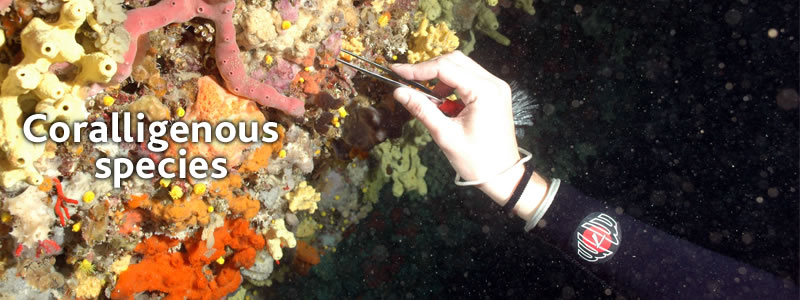
I contributed to the Coralligenous species database to help researchers, managers and general public to species identification. The database contains encrusting calcareous algae, sponges, cnidarians, bryozoans and tunicates.
Image database repository: Pangaea
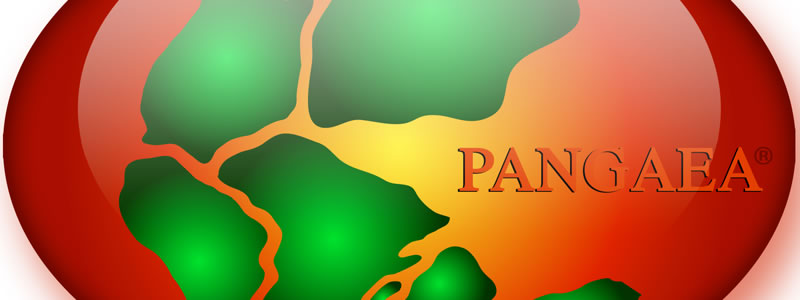
Underwater photographs from Antarctic expeditions and Meditteranean littoral surveys are published in the Open access library for Earth and Environment Science Pangaea.
